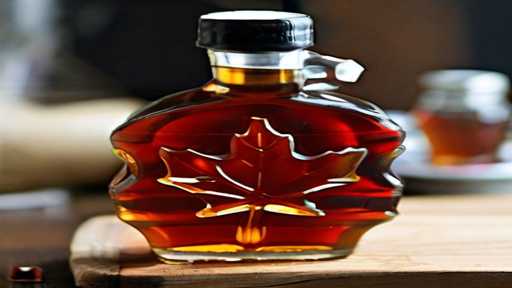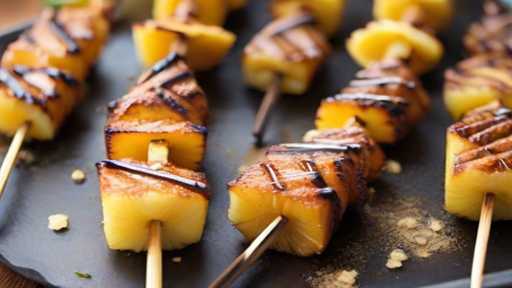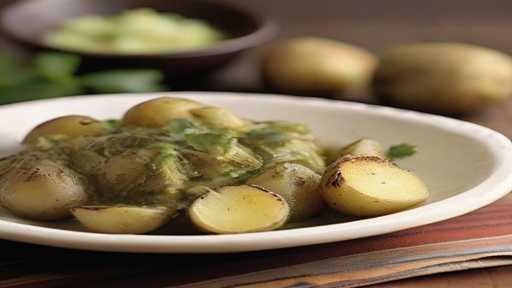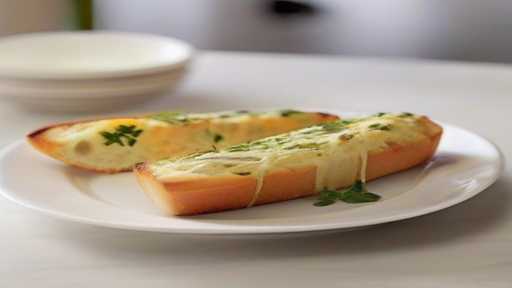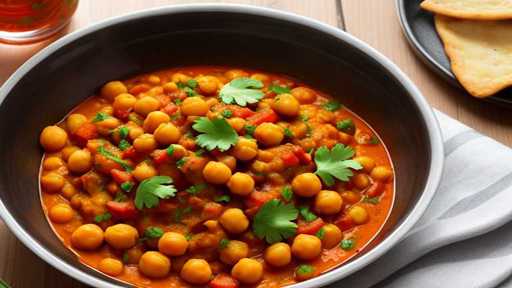Homemade Maple Syrup
Homemade maple syrup is a deliciously made elixir that has its origins in the centuries-old tradition of felling maple trees. This sweet nectar originated with indigenous peoples and has evolved into a treasured practice that combines the bounty of nature and craftsmanship to create a uniquely fragrant syrup.
Homemade Maple Syrup
Cuisine
American
Total Prep Time
35 minutes
Difficulty
Easy
Homemade Maple Syrup Ingredients Syrup:
- Ingredients
- 1. 2 cups granulated sugar
- 2. 1 cup water
- 3. 1 tablespoon brown sugar (optional, for extra flavor)
- 4. 1 teaspoon maple extract (optional, for more maple flavor)
- Substitutes (if needed):
- 1 Granulated sugar: Can be substituted with brown sugar, honey, sugar, etc. Or combine both to create different flavor profiles.
- 2. Brown sugar: If you don’t have brown sugar, you can substitute white sugar.
- 3. Maple Extract: If you don’t have maple extract, use vanilla extract for a sweeter, more aromatic flavor. Note that while it doesn’t have the typical maple flavor, it still adds a delicious essence.
Cooking Guidlines: Homemade Maple Syrup
- Preparation:
- 1. Assemble the ingredients: Make sure you have all the ingredients listed above.
- 2. Cleaning and Disinfecting: Thoroughly clean all instruments and equipment to ensure a clean environment.
- 3. Prepare the bottle or container: Sterilize the glass bottle or container in which you will store your homemade maple syrup. Set aside.
- Cooking Instructions:
- 1. Mix Ingredients:
- • In a medium saucepan, combine 2 cups water and 4 cups granulated sugar over medium heat.
- • Keep swirling until the sugar has completely dissolved.
- 2. Add lemon juice:
- • Squeeze the juice of one lemon (about 1 tablespoon) into the sugar and water mixture.
- • Continue stirring to evenly add the lemon juice.
- 3. Bring to a boil:
- • Increase heat to medium-high and bring mixture to a gentle boil.
- • Once it boils, reduce the heat to maintain an even boil.
- 4. Boil and skim:
- • Simmer the mixture for about 15-20 minutes, using a spoon to remove any foam that forms on the surface.
- • Skimming helps ensure a clear, smooth consistency.
- 5. Checking the consistency:
- • Check the consistency by adding a small amount of syrup to a bowl of cold water. When it’s done, a soft ball should form.
- 6. Add Flavor:
- • To intensify the maple flavor, mix in 1 teaspoon vanilla extract and 1-2 teaspoons maple flavor (if desired).
- • Mix well.
- 7. Final Simmer:
- • Simmer the syrup for another 5-10 minutes to blend the flavors.
- 8. Let it cool and then bottle it.
- • Take the syrup off of the burner and allow it to cool a little.
- • Carefully pour the syrup into a sterile bottle or container.
- 9. Storage:
- • Store the bottle in the refrigerator after securely closing it.
- • Homemade maple syrup will keep for several weeks.
- Key points:
- • Check consistency: Ensuring that the syrup has reached the correct consistency is critical to its texture and taste.
- • Skim the foam: Skimming the foam periodically during cooking will result in a cleaner syrup.
- • Flavor Adjustments: Adjust vanilla extract and maple flavors to suit personal taste preferences.
Homemade maple syrup: Kitchen tools and equipment:
- 1. Large pot:
- • Used to boil maple sap into syrup.
- 2. Bucket or tapping system for collecting maple sap:
- • If you want to collect fresh sap from a maple tree, you will need a method to collect the sap, such as: Examples: buckets and faucet systems.
- 3. Fine mesh strainer or cheesecloth:
- • Used to strain impurities and debris from maple sap during the cooking process.
- 4. Candy or Fry Thermometer:
- • Essential for monitoring the temperature of the juice to ensure it reaches the correct consistency for syrup.
- 5. Heat source (stove or outdoor burner):
- • A stove or outdoor burner that provides the heat to boil the maple sap.
- 6. Slotted spoon or ladle:
- • Removes foam and impurities that float to the surface during cooking.
- 7. Storage Container:
- • Container for storing finished maple syrup. Tight-fitting plastic containers or glass jars work well.
- 8. Funnel:
- • Easily transfer hot syrup to storage containers without spilling.
- 9. Labels and Markers:
- • Label homemade maple syrup with the date and additional information.
- 10. Filling or canning set (optional):
- • If the syrup is to be stored for a long period of time, a filling or canning set can be used to ensure proper sealing.
- 11. Spatula or Spoon:
- • To occasionally stir the syrup during cooking.
- 12. Measuring Cups and Spoons:
- • To measure ingredients accurately.
- 13. Storage racks or cool dark areas:
- • Cool dark areas or storage racks for cooling and solidifying the syrup after bottling.
Pairing:
- 1. Pancakes with homemade maple syrup
- 2. French toast with homemade maple syrup
- 3. Waffles with homemade maple syrup
- 4. Vanilla ice cream with homemade maple syrup
- 5. Bacon and Homemade Maple Syrup
- 6. Sausage and Homemade Maple Syrup
- 7. Oatmeal with Homemade Maple Syrup
- 8. Greek Yogurt with Homemade Maple Syrup
- 9. Roasted Sweet Potatoes with Homemade Maple Syrup
- 10. Roasted Chicken with Homemade Maple Syrup
- 11. Baked Ham with Maple Syrup Glaze
- 12. Apple Pie a La Mode with Maple Syrup Drizzle
- 13. Roasted Brussels Sprouts with Maple Syrup Reduction
- 14. Salmon with Maple Soy Glaze
- 15. Pumpkin Pancakes with Homemade Maple Syrup
- 16. Goat Cheese and Walnut Salad with Maple Vinaigrette
- 17. Side of Maple Sauce Carrots
- 18. Chicken Wings with Maple Bourbon Sauce
- 19. Maple Pecan Cake and vanilla ice cream
- 20. Grilled peach with homemade maple syrup
Tips for cooking homemade maple syrup:

- 1. Choose a high-quality maple extract: To enhance the flavor of your homemade maple syrup, choose a high-quality maple extract. For best results, look for pure maple extract without artificial additives.
- 2. Sweetness Balance: Adjust the sweetness of the syrup by changing the ratio of sugar to water. If you prefer a sweeter syrup, increase the amount of sugar a little, and if you prefer less sweetness, reduce the amount of sugar.
- 3. Experiment with maple varieties: Different types of maple syrup have different flavors. Try different types of maple, including Grade A and Grade B, to find one that suits your tastes.
- 4. Control Thickness: Adjust the cooking time to adjust the thickness of the syrup. Longer cooking times will thicken the syrup, shorter cooking times will thinner the consistency.
- 5. Add Flavor Infusion: Add flavor to and refine your homemade maple syrup. Consider adding a cinnamon stick, vanilla bean, or a few cloves during the cooking process to give it a unique, personal touch.
- 6. Temperature accuracy is important. Use a candy thermometer to ensure accurate temperature control during the cooking process. Maintaining the correct temperature is important to achieving the desired consistency and flavor of maple syrup.
- 7. Filtered water is important: Start with filtered water to avoid contaminants that will affect the flavor of your syrup. Pure water provides a clean, neutral base that allows the maple flavor to shine.
- 8. Storage Tip: Store homemade maple syrup in a glass container so it doesn’t absorb or release unwanted flavors. To extend shelf life, store in the refrigerator and warm slightly before serving.
- 9. Consider dietary preferences: If you have dietary restrictions, you can experiment with alternative sweeteners such as agave syrup or honey to create a syrup tailored to your specific dietary needs.
- 10. Label and Date: If you plan on making a large batch, label your homemade maple syrup with the date you prepared it. By doing this, you can monitor freshness and utilize the oldest batches first.
How to Serve Homemade Maple Syrup:
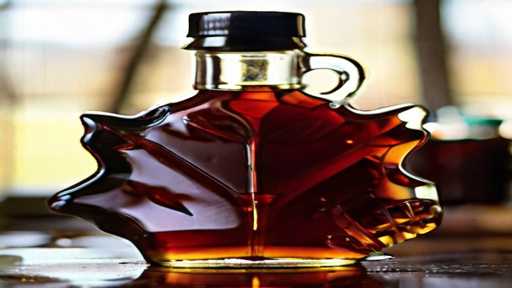
- Presentation:
- 1. Elegant pour method: Pour your homemade maple syrup into a stylish heatproof pitcher or syrup dispenser. This not only adds an elegant touch to your table, but also makes it easy for your guests to pour syrup onto their plates.
- 2. Warmth and Comfort: Serve maple syrup slightly warm for an even more soothing feel. You can do this by heating slowly in a microwave-safe bowl or small saucepan.
- 3. Individual portions: Consider offering each guest an individual ramekin or small bowl so they can consume their own portion of maple syrup. This enables a personalized and convenient service experience.
- 4. Make an artistic drizzle: Encourage guests to drizzle syrup onto their plates in creative patterns. This not only adds to the visual appeal, but also allows you to control the sweetness of your meals.
- Garnish:
- 1. Fresh berries: Add a handful of fresh berries, such as strawberries, blueberries, or raspberries, to the maple syrup. The natural sweetness and bright color complement the rich flavor of the syrup.
- 2. Chopped nuts: Sprinkle chopped nuts, such as pecans or walnuts, liberally over the syrup. The nutty crunch adds texture and depth to each bite.
- 3. Citrus peel: Grate the citrus peel. B. Pour oranges or lemons over the syrup to add a tangy aroma. This not only enhances the taste but also provides a refreshing note.
- 4. Whipped cream: Serve generously with freshly whipped cream next to or directly on top of the syrup. The creamy texture brings out the gentle sweetness of maple syrup.
- Side Dishes:
- 1. Fluffy Pancakes or Waffles: A classic combination: Serve with fluffy pancakes or crispy waffles layered with homemade maple syrup. The synergy of flavors makes it perfect for breakfast or brunch.
- 2. French Toast: Add homemade maple syrup to plain French toast for a luxurious twist. The sweetness goes perfectly with the richness of the eggs on the toast.
- 3. Vanilla Ice Cream: Sprinkle warm maple syrup over vanilla ice cream to refine your dessert. It’s a simple yet fun snack with a pleasant temperature difference.
- 4. Yogurt Parfait: Top yogurt with granola, fresh fruit, and a drizzle of homemade maple syrup for a healthy breakfast or snack. The combination of textures and flavors provides both satiety and nutritional value.
Homemade maple syrup storage and leftovers:
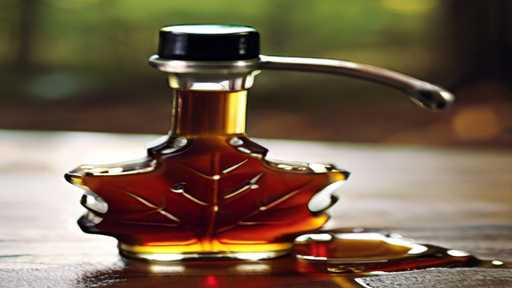
- Storage:
- 1. Refrigerate: Store leftover homemade maple syrup in a clean, airtight container. It is best to use glass or plastic containers with tight-fitting lids.
- 2. Cool and dark place: If the syrup is to be used for a short period of time, there is no problem in storing it in a cool and dark place such as a pantry. However, we recommend storing it in the refrigerator to extend its shelf life.
- 3. Avoid contamination: Make sure the container is clean and dry before transferring the syrup. Do not let water, food particles, or other substances get into the syrup.
- 4. Check for spoilage: Periodically check the syrup for signs of spoilage, such as mold, unpleasant odors, or color changes. If you notice any of these, discard the syrup immediately.
- Reheating Instructions:
- 1. Microwave: For small quantities, you can reheat homemade maple syrup in a microwave-safe container. Stir in short intervals (15-30 seconds) to ensure even heating.
- 2. On the stovetop: Add desired amount of syrup to a small saucepan over medium-low heat. Stir constantly to avoid burning or sticking. Once it reaches your desired temperature, remove it from the heat.
- 3. Water Bath: If the syrup crystallizes or becomes too thick, place the sealed container in a hot water bath. Submerge the container in hot water and leave until the syrup softens. Stir well before eating.
- 4. Avoid overheating: Be careful not to overheat the syrup as this can change the taste and consistency. Warm slowly until it reaches your desired temperature.
- 5. Serve warm: Once heated, pour maple syrup over pancakes, waffles, desserts, and other favorite dishes. Enjoy the rich, natural sweetness of homemade maple syrup.
Homemade Maple Syrup Nutrition Facts (per tablespoon):
- • Calories: 52 kcal
- • Fat: 0 g
- • Saturated fat: 0 g
- • Trans fat: 0 g
- • Cholesterol: 0 mg
- • Sodium: 1 mg
- • Total Carbohydrates: 13g
- • Dietary Fiber: 0g
- • Carbohydrates: 12g
- • Protein: 0g
- Note: These values are approximate and may vary depending on the exact ingredients and cooking method used.
Homemade maple syrup has many health benefits.

- Nutrient-rich: Homemade maple syrup contains essential minerals such as manganese, zinc, and calcium. These minerals play important roles in bone health, immune function, and overall health.
- 1. Antioxidant properties: Maple syrup is rich in antioxidants, including phenolic compounds. Antioxidants fight oxidative stress in the body, reduce the risk of chronic disease, and support cellular health.
- 2. Natural Sweeteners: As a natural sweetener, homemade maple syrup can be a healthier alternative to refined sugar. It provides sweetness without the same amount of processed sugar, making it a better option for those looking to control their sugar intake.
- 3. Source of Energy: Maple syrup contains simple carbohydrates that provide a quick and natural energy boost. Unlike highly processed sugar, the sugar in maple syrup contains beneficial compounds that contribute to sustainable energy levels.
- 4. Anti-inflammatory properties: Some studies suggest that certain compounds in maple syrup may have anti-inflammatory properties. This is beneficial for people who suffer from inflammatory diseases or who want to reduce overall inflammation in the body.
- 5. Supports Digestive Health: Maple syrup contains prebiotics that promote the growth of beneficial gut bacteria. A healthy gut microbiome is associated with improved digestion, nutrient absorption, and overall digestive health.
- 6. Vitamins and Minerals: In addition to manganese, zinc, and calcium, maple syrup contains small amounts of other vitamins and minerals, contributing to a more diverse nutrient profile in your diet.
- 7. No Artificial Additives: When made at home, maple syrup is a pure, natural product without the additives and preservatives often found in commercial syrups. This allows you to consume pure, unadulterated sweetener.
Variations:
- 1. Maple Syrup with Vanilla:
- • Add vanilla essence to homemade maple syrup for added flavor.
- 2. Cinnamon Maple Syrup:
- • Add a cinnamon stick to the syrup for a warm, spicy flavor.
- 3. Maple Syrup with Orange Peel:
- • Grate the orange peel and add to the syrup to add lemon flavor.
- 4. Honey Maple Syrup:
- • Add a touch of honey to maple syrup to give it a unique sweetness.
- 5. Ginger Maple Syrup:
- • Grate fresh ginger and add to the syrup to add a tingly, slightly spicy flavor.
- 6. Maple Syrup with Berries:
- • Blend in fresh berries like strawberries and blueberries for a fruity twist.
- 7. Coconut Maple Syrup:
- • Adding coconut milk to the syrup gives it a tropical flavor.
- 8. Maple Syrup with Chai Spices:
- • Refines syrup with chai spices such as cinnamon, cardamom, and cloves.
- 9. Lemon Basil Maple Syrup:
- • For a refreshing taste, add chopped fresh basil and a squeeze of lemon.
- 10. Smoked Maple Syrup:
- • Add liquid smoke for a unique, smoky flavor.
- 11. Maple Coffee Syrup:
- • Add some strong brewed coffee for a delicious caffeine effect.
- 12. Maple Rosemary Infusion:
- • Boil rosemary sprigs in syrup to create a spicy, aromatic version.
- 13. Pumpkin Spice Maple Syrup:
- • Mix in pumpkin spice for a touch of fall.
- 14. Maple Lavender Syrup:
- • Infusing the syrup with dried lavender flowers creates a pleasant floral flavor.
- 15. Almond Maple Syrup:
- • For a nutty flavor, add 1-2 drops of almond extract and mix.
- 16. Maple Mint Syrup:
- • Add chopped fresh mint leaves for a cooling and refreshing taste.
- 17. Reducing Maple Balsamic:
- • Reduce balsamic vinegar with maple syrup to create a tangy-sweet glaze.
- 18. Maple Chipotle Syrup:
- • For a smoky, spicy kick, add a pinch of ground chipotle to the syrup.
- 19. Maple Whiskey Glaze:
- • Give maple syrup a grown-up twist by mixing in a little of your favorite whiskey.
- 20. Maple Sesame Soil Drizzle:
- • Combine soy sauce and toasted sesame oil with maple syrup for an Asian-inspired flavor.
Recipe Notes: Homemade Maple Syrup

- 1. Maple Tree Variety: Any maple tree can be used for sap, but sugar maple is known to have the highest sugar content in its sap and is the best choice for making maple syrup. Liked. But don’t be discouraged if you don’t have sugar maples. Other varieties such as red maple and black maple can also make delicious syrups.
- 2. When to pick a maple tree: The best time to pick a maple tree is late winter to early spring, when daytime temperatures are above freezing but nighttime temperatures are still below freezing. This temperature fluctuation creates ideal conditions for sap flow.
- 3. Equipment issues: Invest in quality tapping equipment, such as skewers, collection buckets, and hoses. Using clean food-grade ingredients ensures the purity of the syrup.
- 4. Collecting Sap: Making maple syrup requires a large amount of sap. Typically, 40 gallons of sap will produce 1 gallon of syrup. Fresh juices tend to be high in sugar, so be patient and collect your juices regularly.
- 5. Evaporation process: Boiling the juice is a time-consuming process and it is important to monitor the temperature carefully. Use a candy thermometer to check that the juice has reached the desired syrup consistency (approximately 219°F or 104°C).
- 6. Flavor variations: Try different types of maple or mix sap from different trees to create unique flavor profiles. Some connoisseurs add flavors such as vanilla or cinnamon during cooking to add character to their dishes.
- 7. Cultural Significance: Maple syrup is culturally significant to many indigenous communities in North America, who have harvested trees to produce syrup for centuries. Learn the cultural history and traditions of this sweet creation.
- 8. Storage Tip: Once you make your homemade maple syrup, store it in a clean, airtight container. Properly sealed jars and bottles can be stored in a cool, dark place. For long-term storage, we recommend refrigerating.
- 9. Family and community traditions: Maple syrup making is often a family or community activity. Share this experience with your loved ones, involve them in the process, and create lasting memories around this centuries-old tradition.
- 10. Personal Anecdote: Reflect on your own experiences and memories with maple syrup. Whether it’s a family tradition, a special occasion, or a personal accomplishment, these anecdotes will add a sentimental touch to your homemade syrup-making journey.
Homemade Maple Syrup Frequently Asked Questions
1. How can I make homemade maple syrup?
- Q: What ingredients do I need to make homemade maple syrup?
- A: Homemade Maple To make syrup, you need maple sap, which is collected from maple trees in early spring. You’ll also need a large pot, a candy thermometer, and a heat source. The juice is boiled down to the desired consistency and sweetness. It’s a simple process, but it requires time and patience.
- Q: Can you make maple syrup without a maple tree?
- A: No, maple syrup is specifically made from the sap of sugar maples. Although there are other types of syrup (such as birch syrup) that are made from various trees, real maple syrup is made from sugar maple trees. To make authentic homemade maple syrup, you need to obtain a maple tree and its sap.
2. How do I know when my maple syrup is bottled?
- Q: How do I test the consistency of my homemade maple syrup?
- A: You can test the viscosity of maple syrup with a candy thermometer. You can test it. Maple syrup is typically ready for bottling when it reaches a temperature of 104°C (219°F). At this point you should have a thick, syrupy consistency. You can also do a sheet test by dripping a small amount of syrup from a spoon. If it forms leaves rather than individual drops, it’s probably ready.
- Q: Can homemade maple syrup be stored at room temperature?
- A: We recommend storing homemade maple syrup in the refrigerator to maintain quality and prevent spoilage. The high sugar content acts as a natural preservative, and refrigeration helps prevent the growth of mold and bacteria. If stored properly, homemade maple syrup will last for several months. Use clean, airtight containers for storage.
In summary, to make homemade maple syrup, you need to cut down a maple tree, collect the sap, and boil it to create a thick, sweet syrup. Characterized by patience and attention to detail, this simple process creates a delicious homemade alternative to store-bought ones, enriching your cooking experience with natural sweetness.

